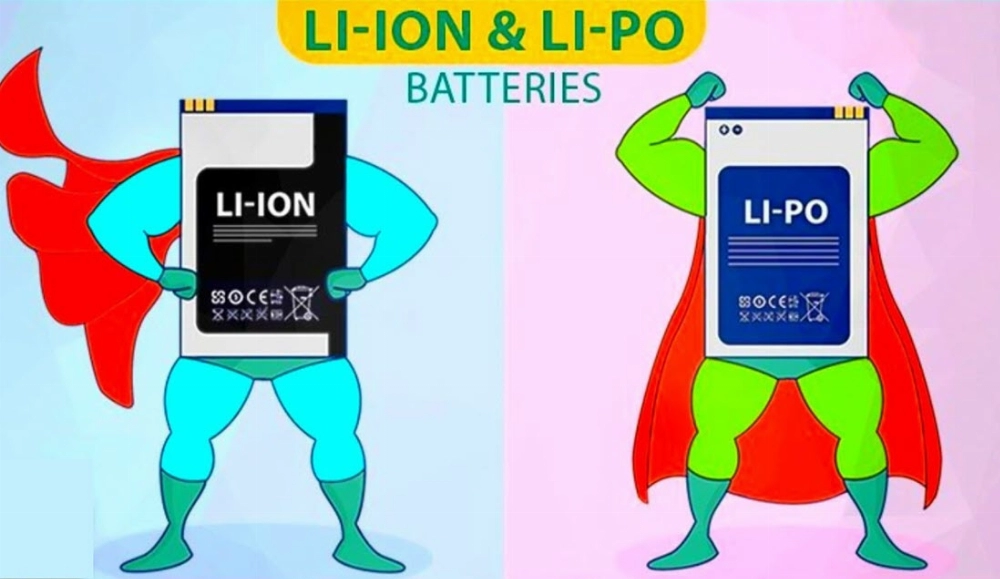Advantages of Lithium-Ion Batteries

No Memory Effect (Memoryless)
Unlike some traditional batteries like Nickel-Cadmium (NiCd), Lithium-Ion (Li-ion) batteries do not suffer from the “memory effect,” which is a significant limitation of other battery types. This means that lithium-ion batteries can maintain their full capacity even if they are charged before being fully discharged.
Low Self-Discharge Rate
Lithium-ion batteries have an extremely low self-discharge rate, approximately 2% per month at room temperature, which is significantly lower than the 25-30% of NiCd batteries and the 30-35% of NiMH batteries, making them a more reliable choice for long-term storage.
Fast Charging
Lithium-ion batteries can be charged at a 1C charge rate, reaching over 80% of their nominal capacity in just 30 minutes. Furthermore, Lithium Iron Phosphate batteries, a type of lithium-ion battery, can reach 90% of their nominal capacity in just 10 minutes, enabling rapid power replenishment for high-demand applications.
Wide Operating Temperature Range
Lithium-ion batteries typically operate well in temperatures ranging from -25°C to 45°C. With ongoing advancements in electrolytes and cathode materials, their operating temperature range is expected to expand to -40°C to 70°C, making them suitable for a variety of environments. Additionally, due to their environmental friendliness, containing no heavy metals or toxic substances, they are a truly green energy source.
Disadvantages of Lithium-Ion Batteries
High Internal Resistance
Due to the use of organic electrolytes, lithium-ion batteries have higher internal resistance than Nickel-Cadmium (NiCd) and Nickel-Metal Hydride (Ni-MH) batteries, leading to lower conductivity, with their internal resistance being approximately ten times that of NiCd and NiMH batteries.
Significant Voltage Drop
Lithium-ion batteries exhibit a significant voltage change during discharge. While NiCd batteries experience only about a 20% voltage drop when discharged to 80% of their rated capacity, lithium-ion batteries can experience voltage drops of around 40%. This can affect the performance of battery-powered equipment, but the voltage change can also help determine the remaining charge.
Accelerated Capacity Fade at High Discharge Rates
At high discharge rates, the capacity decay of lithium-ion batteries is more pronounced. At a 0.5C discharge rate, their capacity decay is similar to that of NiCd batteries, but above 1C, the capacity of lithium-ion batteries decreases significantly. Therefore, lithium-ion batteries are not suitable for high-current discharge. Their maximum discharge rate is typically limited to 1C, and exceeding this value accelerates capacity fade and shortens battery life.
Lithium Iron Phosphate Batteries vs. Lithium-Ion Polymer Batteries
Chemical Composition and Structure
Lithium Iron Phosphate (LiFePO4) batteries use lithium iron phosphate as the cathode, known for its excellent stability and thermal safety. In contrast, Lithium-Ion Polymer (LiPo) batteries use a polymer electrolyte and various cathode materials containing cobalt, manganese, or nickel-based compounds. This difference in composition directly affects the performance and safety characteristics of the two battery types.
Energy Density
LiPo batteries generally have a higher energy density than LiFePO4 batteries, meaning that LiPo batteries can store more energy in the same volume or weight. The higher energy density of LiPo batteries makes them ideal for lightweight and compact applications, such as consumer electronics and portable devices.
Safety and Stability
Lithium Iron Phosphate batteries have higher inherent safety and stability due to their chemical composition, making them less prone to thermal runaway and overheating. In contrast, Lithium-Ion Polymer batteries are more susceptible to thermal issues if handled or charged improperly, requiring more advanced safety mechanisms to prevent potential hazards.
Performance and Applications
Charge and Discharge Cycle Life
Lithium Iron Phosphate batteries typically have a higher charge and discharge cycle life than Lithium-Ion Polymer batteries. Their ability to maintain capacity over numerous cycles makes them well-suited for applications requiring frequent charging, such as electric vehicles and renewable energy storage systems.
Nominal Voltage
Lithium Iron Phosphate batteries typically have a lower nominal voltage compared to Lithium-Ion Polymer batteries, generally ranging from 3.2V to 3.3V per cell, while LiPo batteries may have higher nominal voltages, which can be advantageous in certain high-power applications.

LiFePO4 vs. Lithium-ion Batteries: A Detailed Comparison
Safety and Stability
LiFePO4 batteries are widely praised for their exceptional safety features. Unlike traditional lithium-ion batteries, which can pose risks such as fires or thermal runaway, LiFePO4 chemistry is more stable, significantly reducing the likelihood of hazardous situations. This makes them an excellent choice for applications where safety is a primary concern.
Lifespan and Cycle Life
In terms of longevity, LiFePO4 batteries excel. Depending on usage and maintenance, they can endure 2,000 to 7,000 charge cycles, surpassing many other lithium-ion battery types. This impressive lifespan makes them a valuable long-term investment for both residential and commercial energy storage.
Energy Density
While LiFePO4 batteries are highly durable, their energy density is generally lower than that of lithium-ion batteries. This means lithium-ion batteries are often more efficient at storing energy in a compact space. However, the long lifespan of LiFePO4 often compensates for the slightly lower energy density, especially for applications where long-term performance is more critical than energy storage capacity.
Nominal Voltage
Another key distinction between LiFePO4 and lithium-ion batteries is their nominal voltage. LiFePO4 batteries typically have a lower nominal voltage compared to standard lithium-ion batteries. This difference can affect the design and compatibility of certain devices, requiring voltage or circuit adjustments for optimal performance.
Temperature Sensitivity
LiFePO4 batteries are generally less sensitive to temperature variations than lithium-ion batteries. Their performance remains more consistent across a wider temperature range, making them ideal for environments with frequent temperature fluctuations. Lithium-ion batteries, on the other hand, may experience reduced efficiency or even damage when exposed to extreme temperatures.







